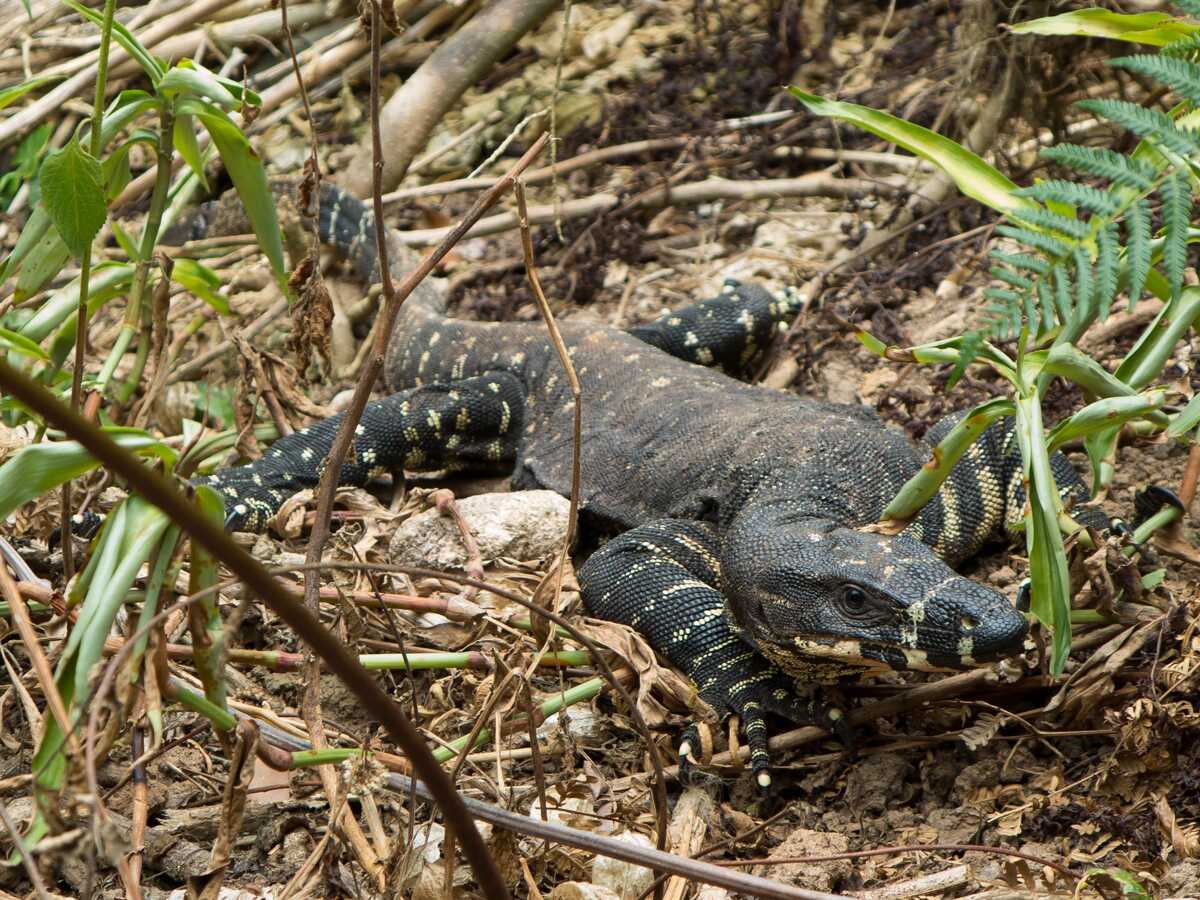{{{description}}}
(Rankinia diemensis) Mountain Dragon is endemic to Australia. It measures up to 20 cm in length. It ranges in colour from grey to reddish-brown, with two rows of lighter-coloured paravertebral stripes or blotches running down its backs and can have cream-coloured bellies.
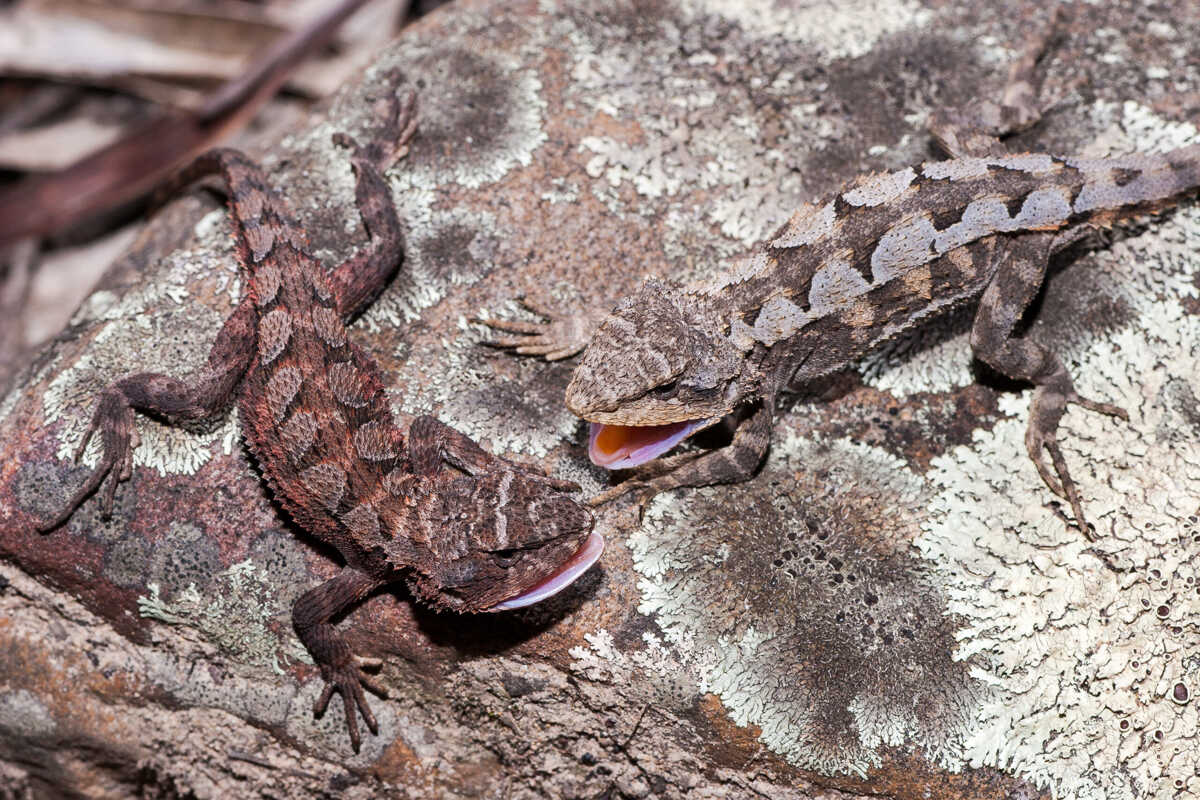
(Chelodina longicollis) The 18-28 cm long turtle has a broad and flattened carapace with a deep medial groove, generally in black or brown colour. It is broad and flattened with a deep medial groove. The scutes are edged in black in those individuals with a lighter background color. The yellow plastron is very broad with sutures edged in black. The long and narrow neck is grey to black dorsally and cream below and the animal bends it sideways into its shell. It's also called the stinker because when scared it emits a smelling fluid from its musk glands.

(Hoplocephalus bungaroides) This venomous snake grows 60-90 cm long with black body and irregular yellow markings arranged in narrow cross-bands.
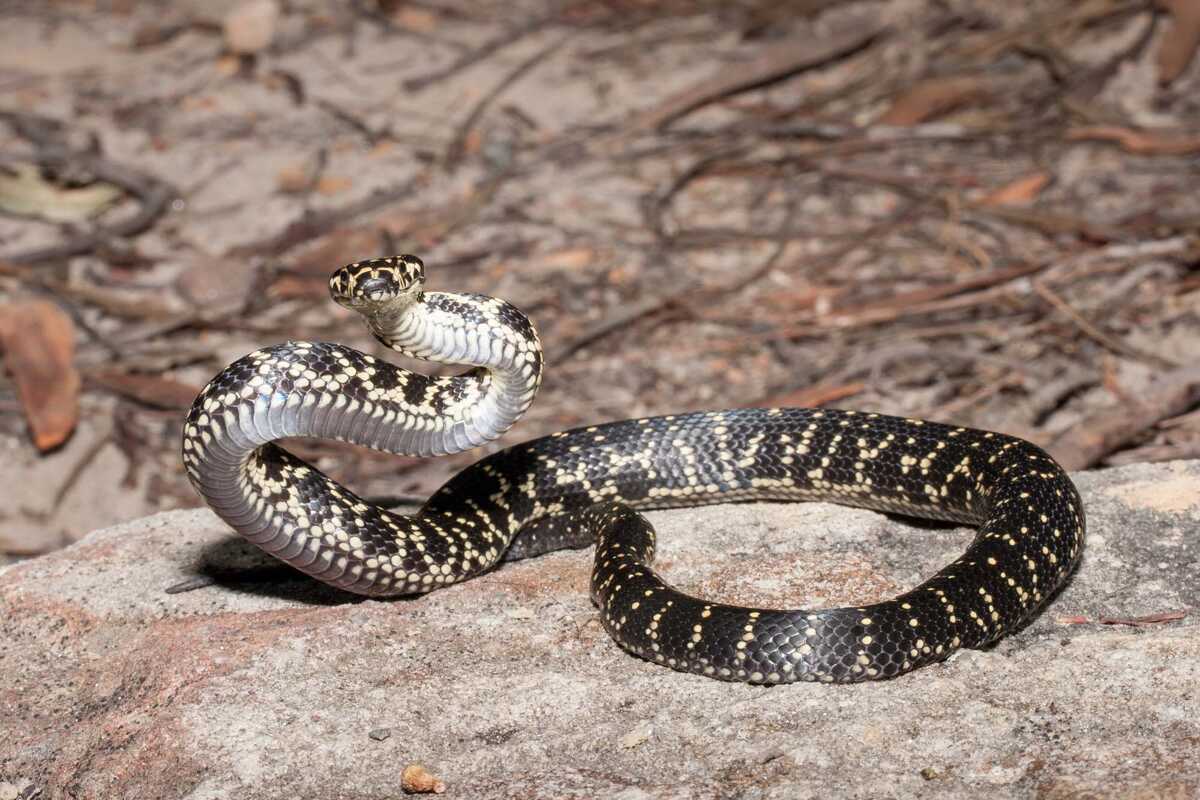
(Pseudechis porphyriacus) This venomous snake is endemic to Australia. It grows around 1.25 m in length with glossy black upperparts, bright red or orange flanks, and a pink or dull red belly. The snake generally avoids encounters with people and is commonly found in woodlands, forests and swamplands.

(Notechis scutatus) Tiger snake is highly venomous and grows up to 1.2 metres in length. Snakes size and colour can vary greately. It has darker bands and olive, yellow, orange-brown, or jet-black colouration with light yellow or orange.
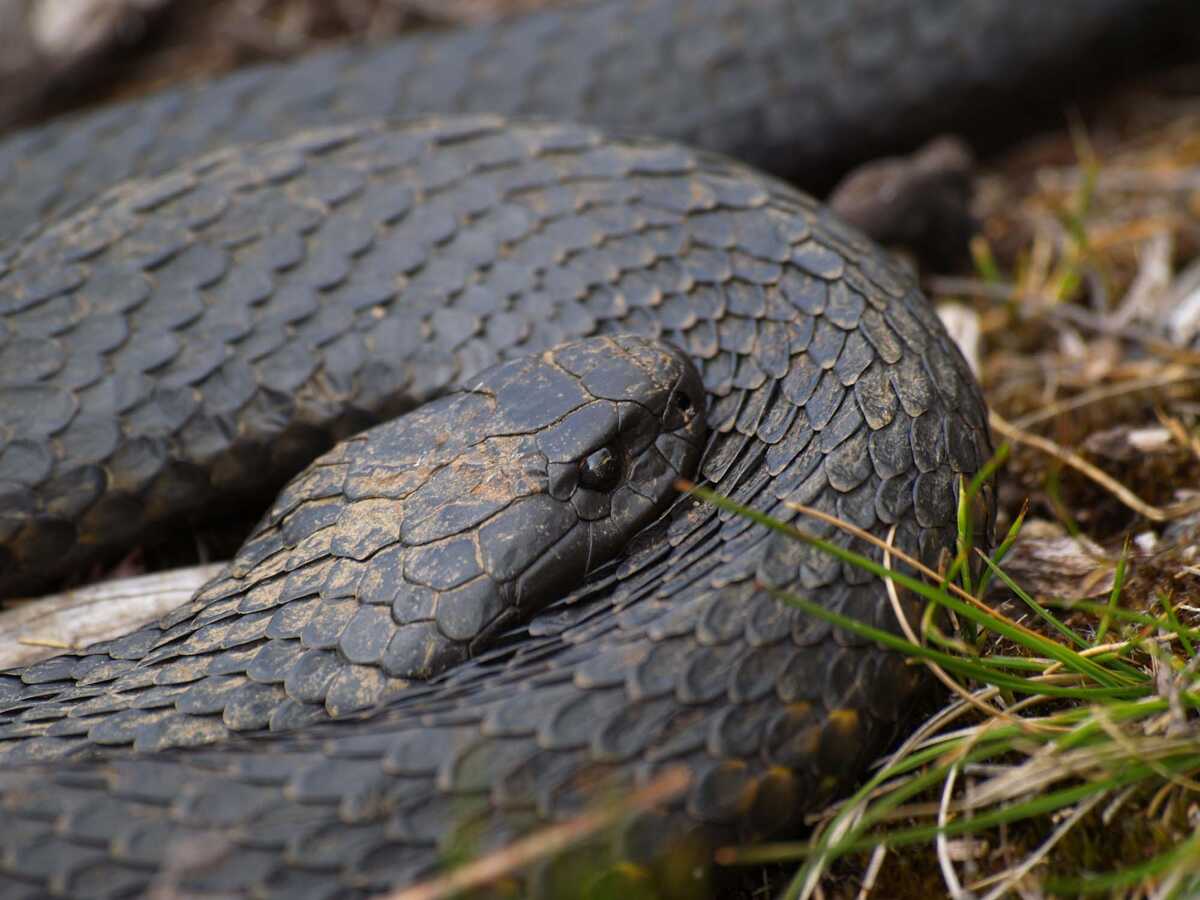
(Morelia spilota spilota) The 2m long snake is of variable colour and pattern, mostly dark olive to black with yellow spots on dorsal scales and numerous clusters (rosettes) of yellow or cream scales along the body and tail. The underside is light in colour.

(Tiliqua scincoides) This lagre lizard is up to 60 cm long with a stout body and short legs. It is variable in color but generally has a banded pattern and a blue tongue. Whe it feels threatened hisses and reveals its blue tongue but can also bite strongly.

(Eulamprus quoyii) This skink is endemic to Australia and is usually found close to slow flowing creeks and estuaries. It grows up to 28 cm in length. It has an olive-brown back with scattered small black spots along the body and tail and a narrow golden or yellow stripe runs from their eye down the side of their body. Its lower flanks are creamy yellow with numerous scattered small black spots.

(Lampropholis delicata) This native Australian skink is 4 - 5.5 cm long with smooth scales. It's body is brown with darker and paler flecks with a narrow yellowish-brown stripe on the outer edge of the back.
(Lampropholis guichenoti) This skink is 9 cm long and brown-black in colour. Its back may appear a dark shade of red when bathing in the sun.
Image by Alex Proimos
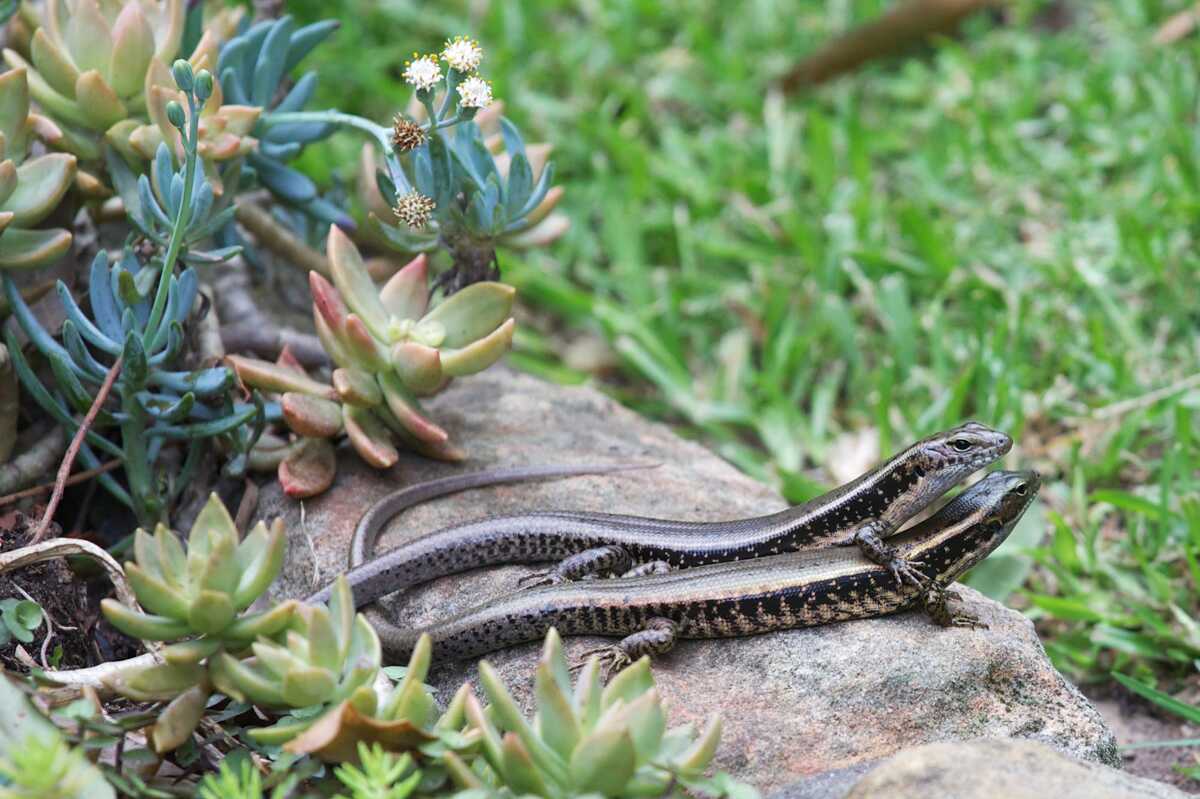
(Saproscincus mustelinus) This skink is 4.5 cm long and covered in iridescent reddish brown scales with distinctive white marks behind and below the eye. It is most active in the evening and warm mornings. When frightened it can lose its tail which then lies on the ground twitching to distract predators.
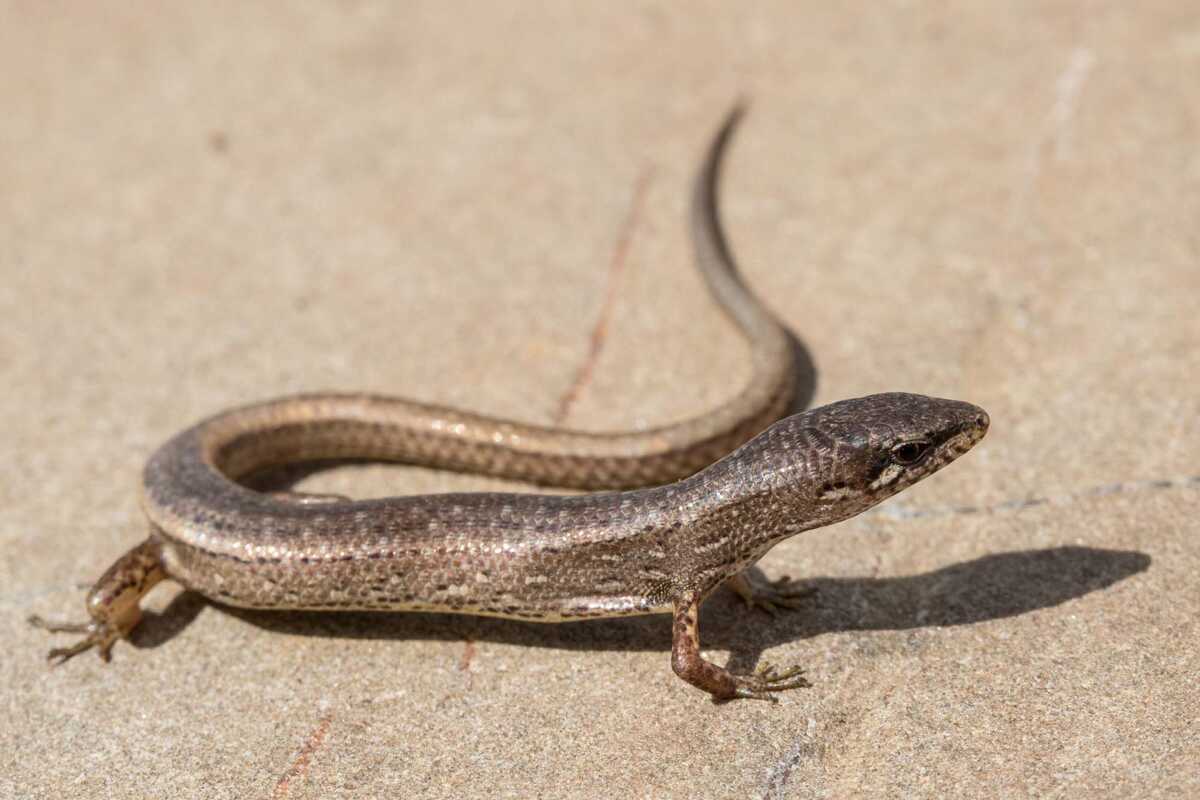
(Varanus varius) This lizard is native to eastern Australia. It can reach up to 2 m in length with a long tail that reaches 1.5 times the length of the head and body.
